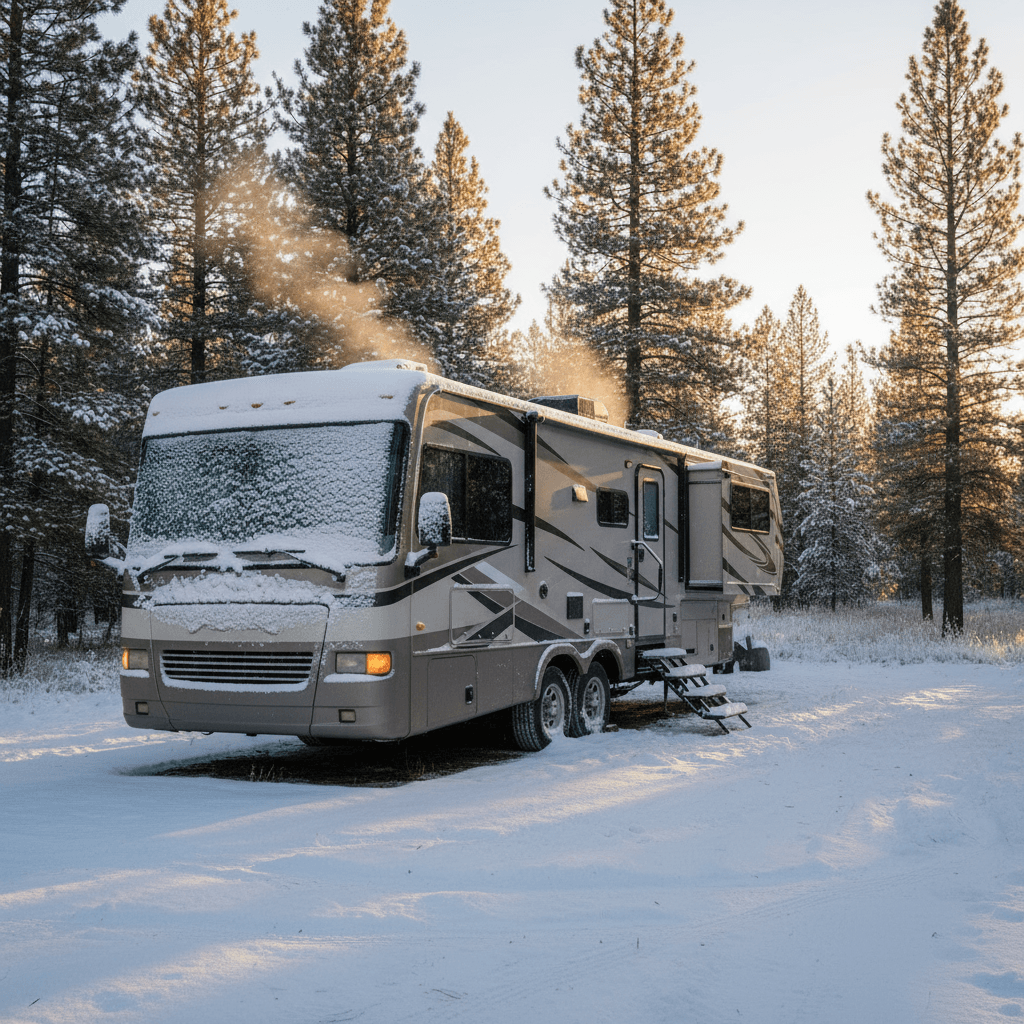Avoid burst pipes, dead batteries, and mold. Expert step-by-step guide + real 2025 product picks to winterize your RV like a pro—safely and affordably.
Two winters ago, my friend Mark stored his camper without properly draining the water lines. Result? $2,300 in repairs, mold in the cabinets, and a ruined spring trip.
Don't let that happen to you.
Winterizing your RV isn't just about "putting it away." It's about protecting your investment, your comfort, and your next adventure. And yes—you can do it right without being a mechanic or spending a fortune.
In this guide, we'll walk you through exactly how to winterize your RV like a pro, using real 2025 products, field-tested tips, and mistakes you must avoid at all costs.
❄️ Why Proper RV Winterizing Matters More Than You Think
Winter is your RV's silent enemy. Extreme cold can:
- Burst pipes from freezing (even if they're "mostly empty"!)
- Destroy your water pump due to trapped ice
- Completely drain your battery in weeks
- Create hidden mold from trapped interior moisture
The good news? With under 45 minutes and less than $150, you can prevent 95% of these issues.
🛠️ Step-by-Step: How to Winterize Your RV (Visual Guide)
✅ Step 1: Clean and Dry the Entire Interior
Empty the fridge, scrub the bathroom, remove damp towels. Moisture is mold's best friend.
💡 Pro Tip: Leave an open box of baking soda or a portable desiccant to absorb moisture throughout winter.
✅ Step 2: Drain and Blow Out the Water System
- Open all faucets (hot and cold)
- Open low-point drain valves on tanks
- Use an RV-specific air compressor (60–80 PSI) to blow residual water from lines
⚠️ Common mistake: Using an unregulated air compressor. You can crack fittings or seals!
✅ Step 3: Add Non-Toxic RV Antifreeze
Never use automotive antifreeze—it's toxic. Use pink, non-toxic RV antifreeze.
Pour it directly into drain traps, toilets, and shower lines—or into the fresh water tank if you're using the pump method.
✅ Step 4: Protect the Battery
- Disconnect it completely
- Store it in a cool, dry place (not your freezing garage!)
- Use a solar battery maintainer if you'll leave it connected
✅ Step 5: Cover and Ventilate
Use a breathable RV cover—never plastic sheeting. And leave a window slightly cracked or install passive solar vents for airflow.
🔌 The 4 Essential Products to Winterize Your RV in 2025
Not all gear is created equal. These are the ones we use, test, and trust:
RV Wholesalers Air Compressor Kit
$89.00
Purpose: Blow out water lines safely | Pros: Built-in regulator, 25-ft hose, RV-specific | Cons: Mid-range price (~$89)
Camco RV Antifreeze (2 gal)
$19.99
Purpose: Protect pipes without toxicity | Pros: NSF-certified, easy pour spout | Cons: Takes up storage space
Battery Tender Solar 10W
$59.95
Purpose: Keep battery topped off all winter | Pros: Works on cloudy days, plug-and-play | Cons: Not for large battery banks
ADC RV Cover – Breathable
$129.99
Purpose: Shield from snow & UV without trapping moisture | Pros: Sealed seams, side vents, 3-year warranty | Cons: Sizing must be exact
💚 Expert Tip: "I never put antifreeze in the fresh water tank unless I'm 100% sure I'll flush it thoroughly in spring. I prefer blowing out lines with air and only using antifreeze in P-traps and shower drains." — Carlos, RV Technician since 2012
❌ 3 Winterizing Mistakes That Destroy RVs (And How to Avoid Them)
- "It's dry—no antifreeze needed." → Residual vapor freezes. Always protect drain traps.
- Leaving the battery connected "just in case." → It'll drain dead in 3 weeks. Disconnect it.
- Using a plastic tarp as a cover. → Traps condensation. Only use breathable RV covers.
🌤️ Get Ready for a Stress-Free Spring
Proper winterizing isn't an expense—it's peace of mind. Imagine this:
You open your RV in April, turn on the water pump… and everything works like day one.
That's possible. And it starts today.
Tags:
Share this article:
Ready to upgrade your RV?
Explore our complete collection of RV accessories, camping gear, and expert guides.
Browse All Guides